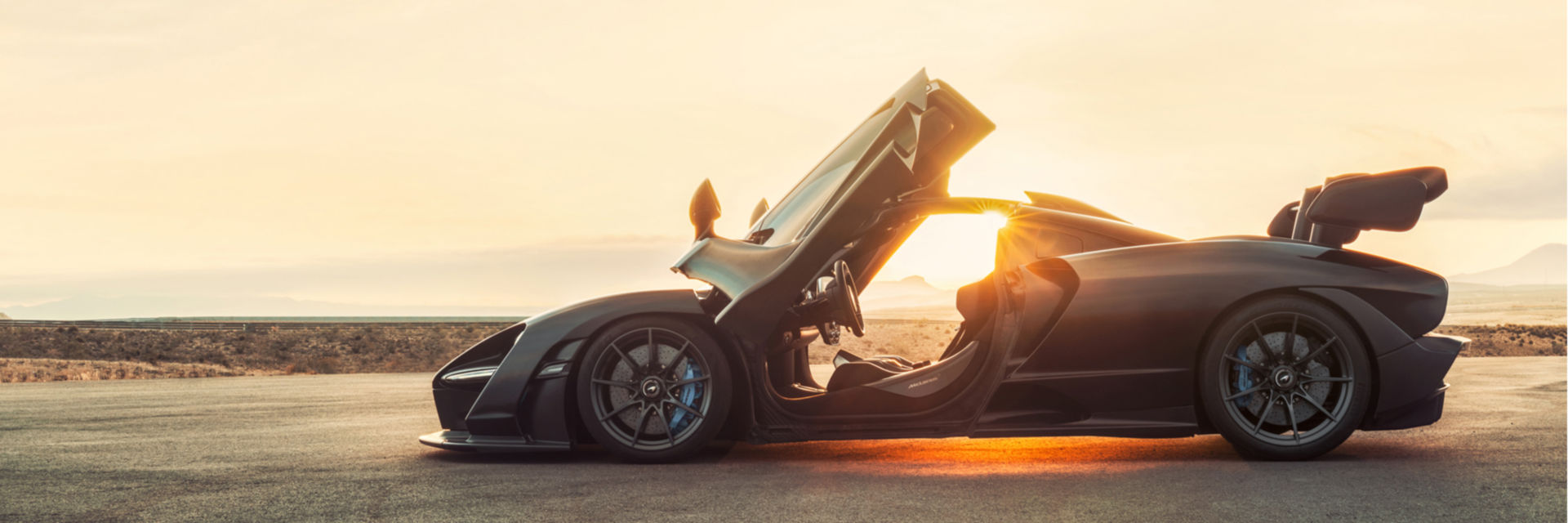Current Models
Explore all Models
-
Supercars
-
-
Ultimate
-

McLaren Senna
Form Follows Function
THE DESIGN LANGUAGE OF THE SENNA WAS A LANDMARK IN OUR STORY.
No other McLaren looked like the McLaren Senna. Because no other McLaren had ever been shaped by such uncompromising performance targets. Our designers and engineers pushed all boundaries. Even further than the McLaren P1™. Extreme downforce and the ability to transfer the aerodynamic balance between front and rear were guiding principles. These elements underpinned the car’s prowess – delivering supreme driver confidence and ultimate lap times.
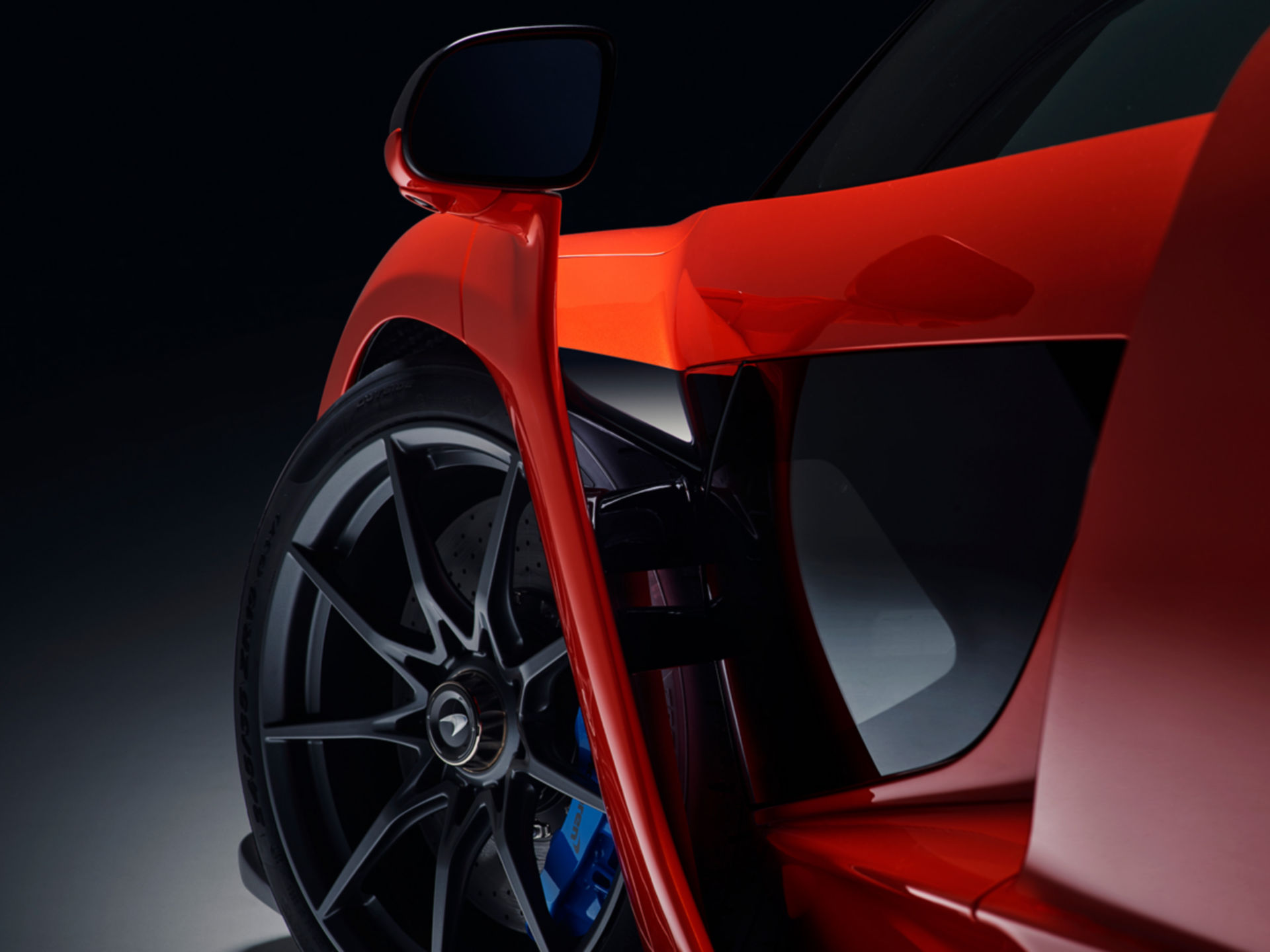
The Senna’s hyper-aggressive appearance is a distillation of McLaren’s ‘form follows function’ design philosophy. Relentlessly pursuing aerodynamic efficiency and high downforce, the designers cut and pared the shrink-wrapped body to reduce weight. This is recognisably a McLaren, but every line from front to rear is punctuated by a functional intake or vent. For the sake of ultimate performance. Everything you see reflects and celebrates the extreme engineering of the vehicle with brutal honesty.
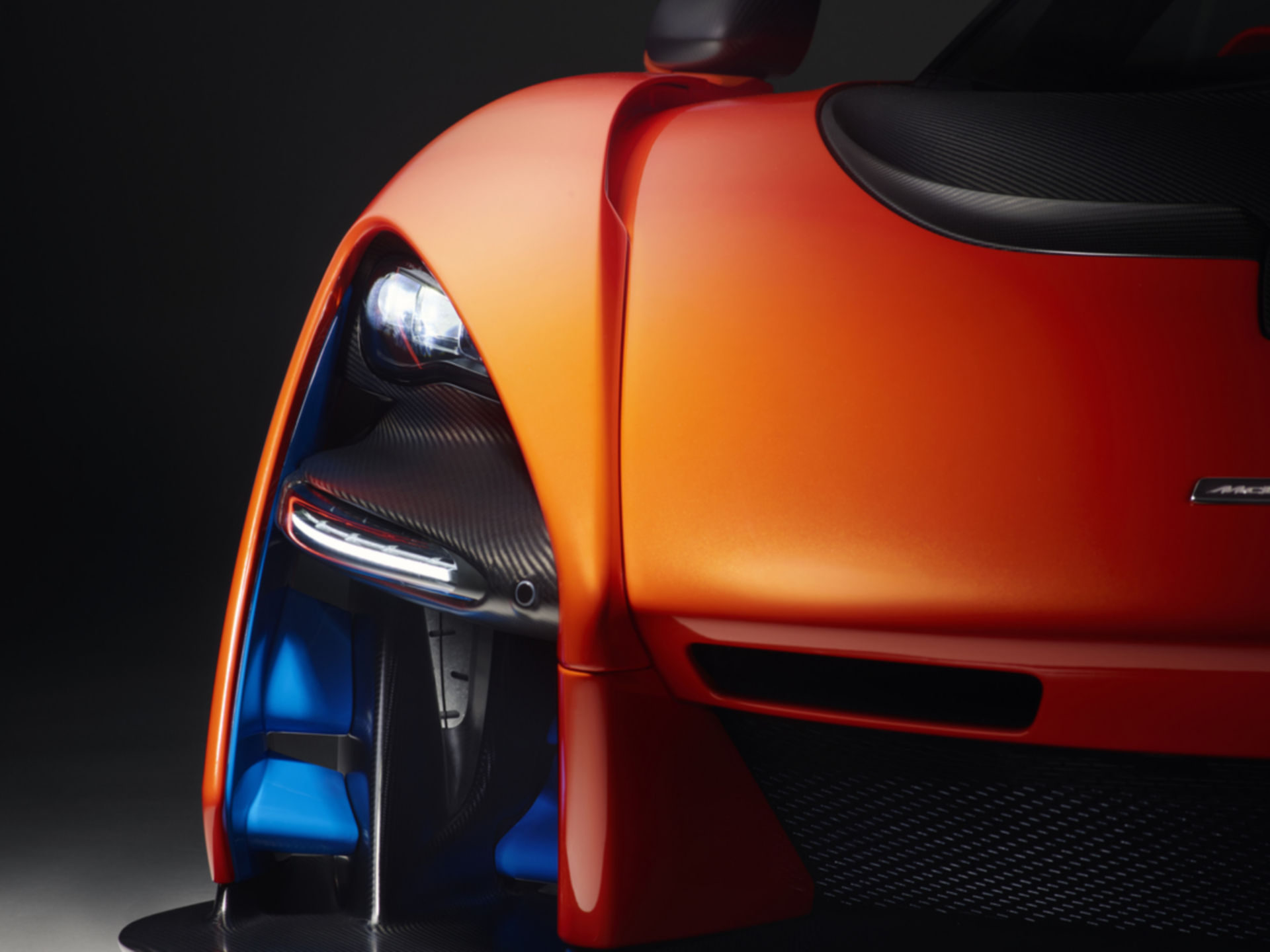
The rear clamshell of the Senna is defined entirely by the demands of aerodynamics and cooling. A prominent ‘gurney’ flap ahead of the stepped louvres repels air, directing it around the sides of the vehicle and up towards the trademark rear wing. The resulting area of low pressure draws hot air from the high-temperature radiators and engine bay, while the stepped louvres progressively link airflow to the trailing edge of the vehicle and rear wing. This was radical design in 2018. It still is.

The McLaren Senna’s exhaust system is like no other. Beautifully crafted from lightweight Inconel and titanium, the unique ‘slash cut’ pipes exit through the rear deck. Painstakingly engineered to reduce weight, they are highly efficient and effective. Exhaust upthrust actually contributes to the car’s aerodynamic performance. And their distinctive positioning also helps engine cooling. The unmistakable exhaust sound intensifies as revs rise – 10dB for every 2000rpm – soaring with thrilling effect right to the engine’s rev limit.
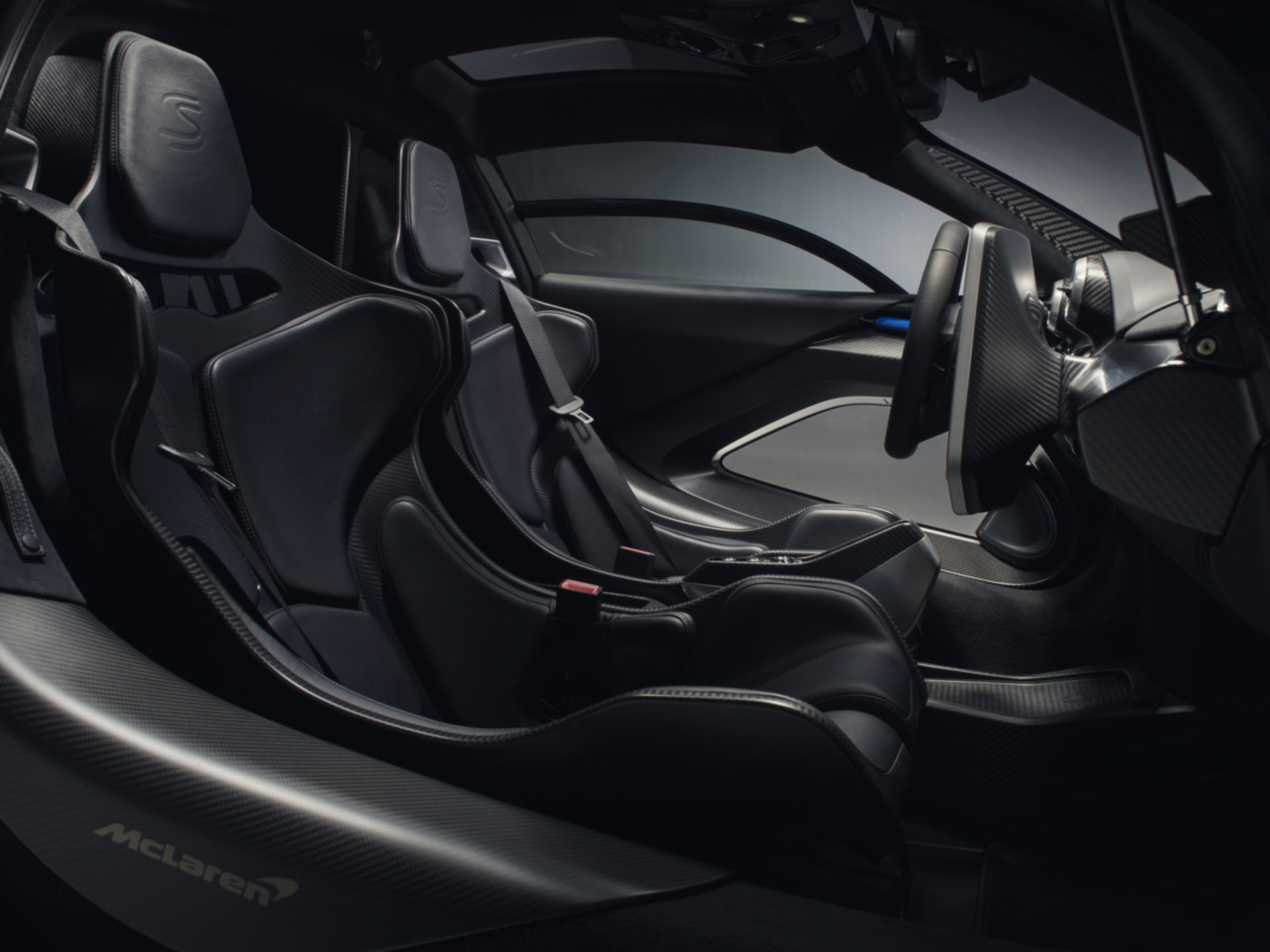
The McLaren Senna uses the immensely strong, stiff and lightweight MonoCage III – complete with an innovative double-walled carbon fibre upper rear structure. It was naturally engineered for track work from the start, with stowage space for two race helmets and suits – a perfect blend of form and function. There is, of course, no room for additional luggage. Clearly reflecting the Senna’s unblinking track focus. Owners were able to specify six-point racing harnesses for both driver and passenger. And even an MSO Defined powered drink system – to ensure optimal hydration during extended circuit running.
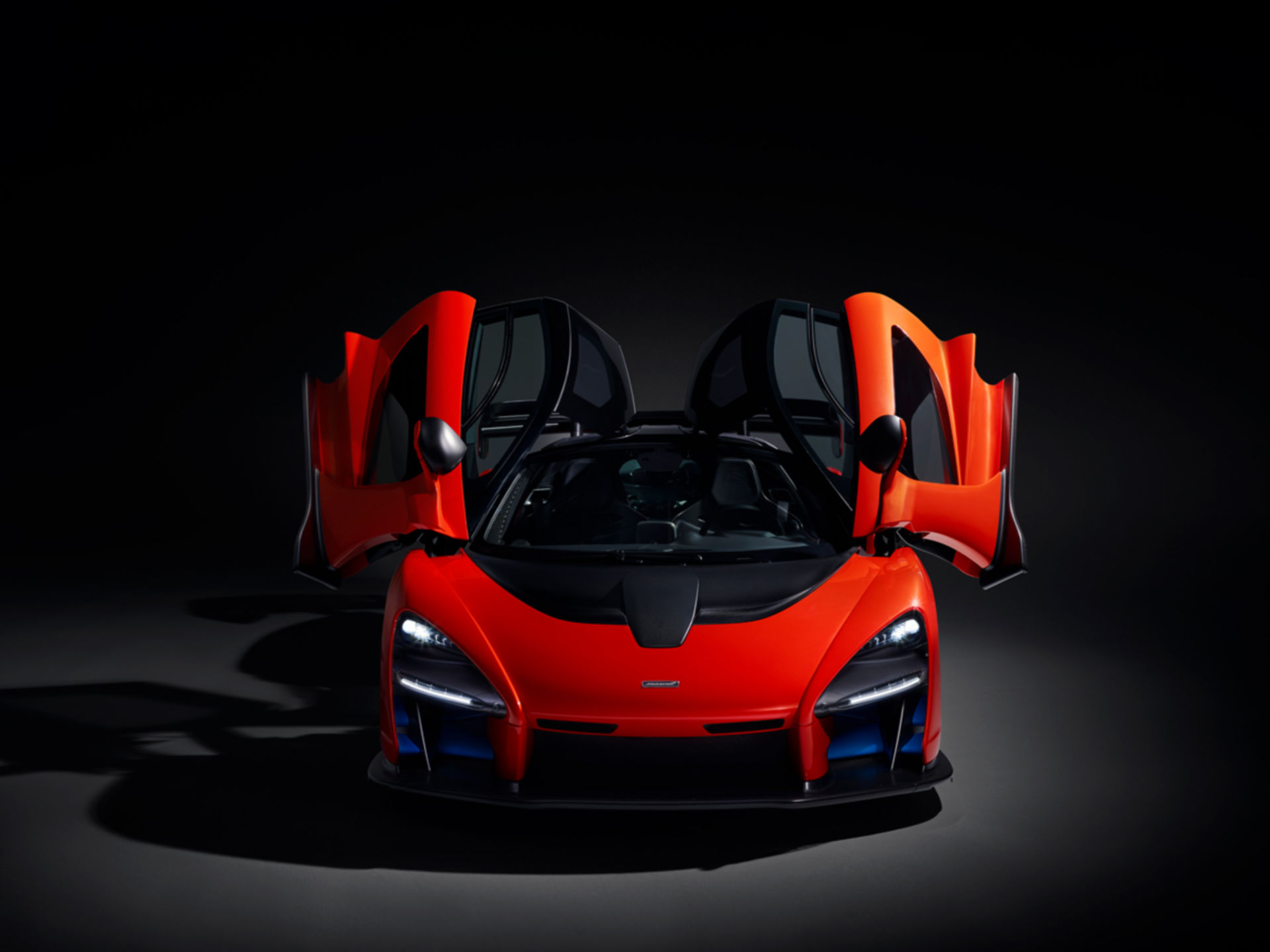
The McLaren F1-inspired doors are a classic Senna innovation. They have unique glazed panels made from lightweight toughened Gorilla Glass, and create an intimate connection between driver and environment. Inspired by the 360-degree vision experienced by helicopter pilots, these iconic doors provide fantastic visibility and an unmatched sense of drama as light floods into the cabin. The immense strength of the MonoCage III allows for incredibly slim roof pillars that enhance the excellent view through the deep, wide windscreen – and across the front fenders. For perfect placement through every corner.
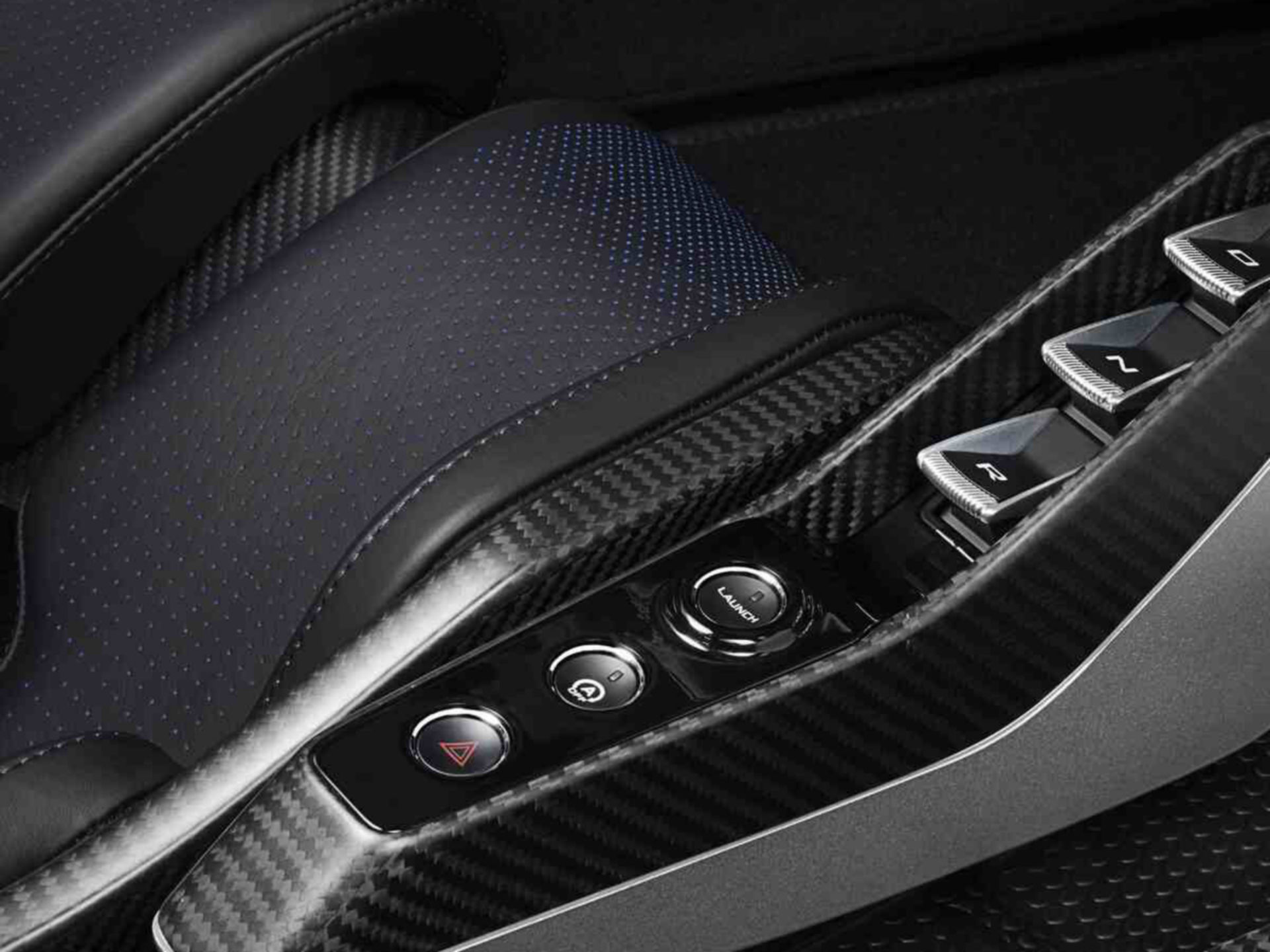
From within the cockpit of the McLaren Senna, the extreme engineering is clear to see. The three-spoke steering wheel is free of buttons and switches, creating a pure focus on the sensory feedback. The door-release mechanisms and window switches have been moved to the centre of the vehicle, to a roof-mounted console. Alcantara covers the side airbags but the removal of further interior trim saves weight. Even the gas door struts are exposed to save vital grams. Stopping short of removing the second seat altogether, the interior of the McLaren Senna is unashamedly ‘anti-social’ and utterly focused upon the driver.
Register Your Interest
Contact a retailer or register your interest to be kept up to date with the latest McLaren Automotive news











































